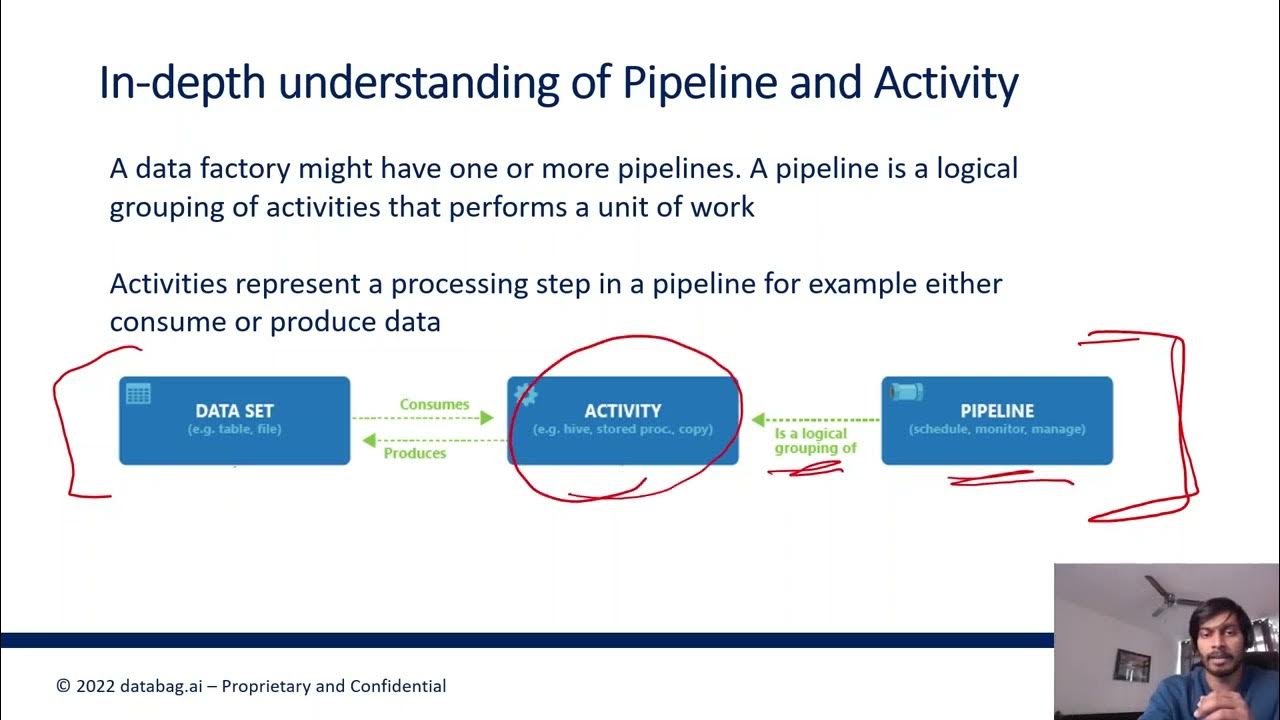Pengantar Data Mining - #1 Intuisi Kenapa Harus Menggunakan Data Mining
Summary
TLDRThe video explores the concept of data transformation and the types of data in our world today. It discusses the shift from raw data to valuable insights and highlights the difference between structured data (like student grades or supermarket purchases) and unstructured data (such as social media posts, videos, and images). The speaker emphasizes that unstructured data makes up over 80% of the data produced globally, especially in the realm of entertainment and social media. The video concludes by explaining how the ease of creating and consuming unstructured data is a key factor in its widespread use.
Takeaways
- 😀 Insight is derived from understanding current data and events, which helps inform decision-making.
- 📊 Data transformation involves converting raw data into usable knowledge, adding value to the information.
- 💻 Structured data is organized in a table format, such as purchase records or student grades, making it easier to analyze.
- 🎥 Unstructured data includes forms like text, images, audio, and video, which don't follow a fixed structure.
- 🔢 Structured data accounts for a small percentage of total data, while unstructured data is much more prevalent in the world.
- 💬 Examples of unstructured data include social media content (e.g., tweets), which can be difficult to categorize without context.
- 🎶 The growth of unstructured data is largely driven by entertainment and personal content, such as videos, music, and memes.
- 📈 The rate of data production is growing rapidly, with unstructured data leading this increase in recent years.
- 🔍 Unstructured data presents challenges for analysis, as it requires advanced tools like machine learning or natural language processing to interpret.
- 💡 The shift towards unstructured data reflects broader trends in how people interact with media and communicate online, emphasizing the importance of content production.
- 🌍 More than 80% of global data is unstructured, and this trend is expected to continue due to changes in how people create and consume content.
Q & A
What is the main focus of the video script?
-The main focus of the video script is on data, specifically its types (structured vs. unstructured), the process of data transformation, and how data can provide insights and knowledge.
What is the significance of understanding data types in this context?
-Understanding the different types of data—structured and unstructured—is crucial as it helps in selecting the right approach for data analysis and transforming raw data into valuable insights or knowledge.
How is structured data defined in the script, and can you give examples?
-Structured data is defined as data that is organized in a predefined manner, often in tables or databases. Examples include purchase records in a supermarket (e.g., product codes, prices) or student grades.
What is unstructured data, and how is it different from structured data?
-Unstructured data does not follow a predefined format or organization, such as text (tweets, social media posts), images, videos, and audio. Unlike structured data, unstructured data is harder to categorize and process.
Why is unstructured data more prevalent than structured data?
-Unstructured data is more prevalent because people engage with various forms of media like videos, music, and social media posts on a daily basis, which are inherently unstructured. This type of data is produced freely without a set format.
How does unstructured data differ in terms of production and usage compared to structured data?
-Unstructured data is produced without strict rules or formats—people can easily create and share it (e.g., videos, tweets). In contrast, structured data is typically generated for specific uses, like demographic information or academic records.
What percentage of data worldwide is unstructured, according to the script?
-The script states that over 80% of data worldwide is unstructured, encompassing various types of media like videos, images, and social media content.
What does the speaker mean by 'data transformation' in the video?
-Data transformation refers to the process of converting raw data into a more valuable and meaningful form, ultimately turning it into knowledge or insights that can be used for decision-making.
What is the role of insights in data analysis as described in the script?
-Insights are key to understanding the meaning behind the data, as they are derived from analyzing the data in the context of current events or specific situations. These insights help inform decisions and actions.
What conclusion does the speaker draw about the relationship between structured and unstructured data?
-The speaker concludes that while structured data plays an important role in specific tasks (like academic or demographic data), unstructured data is much more abundant and widely used in everyday activities, especially for entertainment and social media engagement.
Outlines

Cette section est réservée aux utilisateurs payants. Améliorez votre compte pour accéder à cette section.
Améliorer maintenantMindmap

Cette section est réservée aux utilisateurs payants. Améliorez votre compte pour accéder à cette section.
Améliorer maintenantKeywords

Cette section est réservée aux utilisateurs payants. Améliorez votre compte pour accéder à cette section.
Améliorer maintenantHighlights

Cette section est réservée aux utilisateurs payants. Améliorez votre compte pour accéder à cette section.
Améliorer maintenantTranscripts

Cette section est réservée aux utilisateurs payants. Améliorez votre compte pour accéder à cette section.
Améliorer maintenantVoir Plus de Vidéos Connexes

Data Compression

Introduction to the concept of Data and Database Management System

Perkuliahan Robotik dan Kecerdasan Buatan : Pengenalan AI

What Is Big Data? Types, Structure & Why It Matters! 🚀 | upGrad KnowledgeHut

Azure Data Factory Part 5 - Types of Data Pipeline Activities

What are Data and Data Literacy: Study Hall Data Literacy #1: ASU + Crash Course
5.0 / 5 (0 votes)
